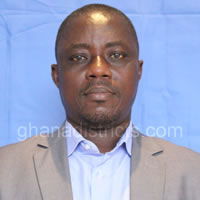Health is one of the basic inputs to human development. As indicated by the demographic projection, the population of the district will grow significantly within the planned period.This situation calls for an assessment and analysis of the demand for health services and facilities.The THLD-DHD is a component of the Ghana Health Service and renders curative, preventive, promotional and rehabilitative health services to all the communities within the district’s catchment area. The Primary Health Care (PHC) delivery system was introduced as a means of decentralizing the health care system in the country. It emphasizes on preventive, curative and rehabilitative measures as they are needed. In ensuring its effectiveness, Community-Based Health Planning Services (CHPS) Compound has designed for clusters of communities to provide first line health care.
Vision
In line with the ministry of health, the vision of the Twifo Hemang Lower Denkyira District Health Directorate (THLD-DHD) is to have a healthy population for national development.
Mission Statement
The mission of the THLD-DHD is to contribute to the socio-economic development and the development of a local health industry by promoting health and vitality through access to quality health for all people living in the THLD District using motivated personnel.The DHMT believes that all people are equal, have a right to life, and therefore, have a right to basic health services, which is affordable, accessible and acceptable to all the community members.
Goal
The goal of the THLD DHD is to have a healthy and productive population that reproduces itself safely.
Sector Wide Objectives
As part of efforts to achieve its Vision, Mission and Goal, the following objectives guide the THLD-DHD:
•Bridging equity gaps in access to health and nutrition services and ensure sustainable financing arrangements that protect the poor.
•Strengthening governance and improving efficiency & effectiveness of the health system at the district level.
•Improve access to quality Maternal, Neonatal, Child and Adolescent Services.
•Intensify prevention and control of Communicable & Non-communicable diseases.
•Strengthening institutional care, including mental health service delivery.
Priority Health Interventions
The district prioritizes health for attention in achieving its objectives of sustainable development. Consequently, the district is currently focused on the following interventions:
•Improving maternal and child health
•Child health services
•EPI including measles elimination
•Maternal and reproductive health services
•Adolescent health and development services
•Controlling Communicable Diseases
•HIV/AIDS and STI prevention and control
•Tuberculosis control
•Malaria control
•Guinea worm eradication
•Preventing and Controlling Non-communicable diseases
•Health promotion and Nutrition rehabilitation
•Increasing CHPS compounds
Health Delivery System
Health delivery system in the district is made up of the orthodox and traditional system. The latter is made up of herbalists, fetish priests and priestesses and spiritualist, though it plays a crucial role in health delivery in the district, it seems underdeveloped. It has not been in any way integrated into the modern or orthodox medical practice. Health delivery under the orthodox system in the district exits in two levels (A and B) under the country’s primary health care system, that is, the community and sub-district levels. The district has no district hospital but three (3) health centres at Hemang, Frami and Jukwa, six (6) CHPS Compounds at Shed, Krobo, Nsutem, Wawase, Watreso and Mfoum, as well as one (1) private community clinic (St. Vincent Clinic) at Abrafo. Referrals are made to the nearby hospitals at Cape Coast and Twifo Praso
Manpower
The district director of health services is the administrative head of the DHMT. In addition to the DDHS, other unit heads that make up the DHMT include one (1) Deputy Director of Nursing Services, two (2) Disease Control Officers, one (1) Health Information Officer, one (1) Nutrition Officer and one (1) Field Technician. Currently, the district has no medical doctor, but has two (2) Physician Assistants who manage Hemang and Jukwa health centres. Other categories of staff include 51 Nurses (all categories), 4 Midwives, 93 CBSVs and 82 TBAs.
The efficiency of health delivery is measured by the availability of qualified health personnel and the population it is serving. Currently, the district had a Doctor-Patient ratio of 0:56,784 and a Nurse-Patient ratio of 1:1,113. These ratios compared unfavorably with the regional and national standards for the same period. This implies that the population is underserved in terms of health care services making accessibility to health care expensive. Consequently, many patients are compelled to rely on the private clinics whose services are relatively expensive. Again, patients who cannot afford private health services resort to self-medication, quack doctors who parade the rural communities and herbalists which in many cases worsen patients’ plight resulting in many preventable deaths.
Health Infrastructure
Improving health care and delivery in the district implies investment in infrastructure and personnel. Currently, the state of health infrastructure in the district is a serious challenge to better health service delivery. Some of the facilities especially the CHPs compounds are using rented or temporary premises with make shift facilities to cater for patients. Since the district is new and having a growing population, health infrastructure need to be expanded to provide effective and efficient health services to the population. In planning to increase access and expand delivery with respect to infrastructure, the district plans to expand health delivery by constructing CHPS compounds in all the electoral areas in the district and upgrade the Twifo Hemang Health Centre to a Polyclinic status in the very new future.
Morbidity Burden
Like any other district, the district has its own disease burden which the District Health Directorate and all Heath facilities, including other private facilities are working assiduously to reduce its burden. Although there has been general improvement in the health conditions in the district with existing facilities exhibiting tremendous success in their programmes, malaria cases continue to afflict both children and adults and it is the most reported of the diseases as a result of poor sanitation and generally unclean environment. Acute respiratory infections and diarrhoea continue to be ranked highly after malaria. Due to the occupational background of the population living in the district, conditions such as snake bite and other animal bites are also common.
Inter-Sectoral Collaboration and Community Participation
The District Health Directorate is charged with the responsibilities of ensuring and maintaining a comprehensive health care delivery system, which is wider in its scope, efficient in its operation, economically cheaper but viable in cost, recognizes the huge task ahead. It is against this background that the DHMT has been collaborating effectively with its social partners. The major collaborators of the District Health Directorate include the District Assembly, M.O.F.A, GES, Electoral commission, Ghana Police service, Traditional Authorities, Religious Leaders, Other opinion leaders, philanthropists, among others.
The aforementioned organizations and agencies have in diverse ways been assisting and supporting the DHMT in the implementation of its health programmes. This multifaceted approach, adopted by the District Health Directorate gives great impetus to the programmes and invariably helps in the attainment of programme objectives and targets in a more accelerated manner. Dialogue with chiefs, opinion leaders, assemblymen, unit-committee members has continued to create greater opportunities to ensuring total community participation in health delivery programmes.
Other agencies and international organizations that assist in the health delivery activities in the district include:
•United Nations International Children Education Fund (UNICEF)
•The Global Fund
•USAID
Health Insurance
The Twifo Hemang Morkwa Lower Denkyira (THEMOLD) Mutual Health Insurance Scheme was established by an act of parliament Act 650, with the legislative Instrument L.1.1809. Its’ operational area covers both the Twifo-Atti Morkwa and Twifo Hemang-Lower Denkyira Districts.
The Scheme has a membership of over thirty thousand (30,000.00) covering all categories of subscribers.
Finance
Currently, the Scheme has a good financial base; it has a sound financial practice. More premiums would be collected and the exempt category would have its fair share from the National Health Insurance Council (NHIC) fund.
Benefit package
The Scheme covers about 95% of all common disease conditions in the District. It has also been able to pay for all services that were rendered to its members (clients) by health providers since it started its operations.
Human Resources
THEMOLD- DMHIS has all the staff approved by the National Health Insurance Council at post. And all the necessary structures such as the Community Health Insurance Committees (CHIC). Board of Directors and the General Assembly are all in place and Functioning in accordance with the law (Act 650).
Achievements & Challenges
Over the period of existence the scheme has made strides and made significant achievements including the acquisition of land for office accommodation at Twifo Praso, generation of membership cards for all pregnant women and all registered members and effective and efficient claims and financial management
However, it operational challenges among others include the acquisition of a spacious office accommodation, increasing membership in an era of apathy to registration and renewal due to one-time premium expectation, inadequate logistics, absorption of remuneration package for supporting staff by National Health Insurance Authority.
HIV And AIDS
There are reported cases of HIV/AIDS in the district. The district health centers run HIV/AIDS Control Programmes through Prevention of Mother to Child Transmission (PMTCT), HIV Counseling and Testing (HTC). According to the 2013 GHS Annual Performance Report, 21 new HIV cases were diagnosed in 2012 reduced to 18 in 2013. Again, under the PMTCT, a total of 1,294 expectant mothers tested, 16 (1.2%) tested positive and received the Anti Retroviral Vaccine (ARV) in 2012, whereas 16 (2.2%) tested positive from a total of 703 expectants mothers in 2013.In 2012, the health facilities counseled and tested 14 persons out of which 5 (35.7%) tested positive as against 22 persons counseled and tested with 2 (9.0%) positive.
This indicates decreases in the infection rates among persons who visit the health and counseling facilities in the district.The objective of the district towards fighting the HIV/AIDS menace has been to create awareness in the communities and to reinforce behavioural change communication messages on the disease to reduce its burden.The HIV prevalent rate in the district is estimated at 2.9%, above the 2009 National rate of 1.7% and it affects more females in the age group of 19 - 45.Some of the predisposing factors are early age of first sexual encounter at 13 years on the average, high rate of pre-marital and extra marital unprotected sex, resulting from traditional cultural activities such as funeral celebrations and festivals, tourism activities and the low level of HIV/AIDS sensitization among the people in the District and the high incidence of poverty especially among women and the youth.
The alarming rate of infection among women in the district calls for urgent and serious attention as it has the capacity to affect productivity and increase in health bills. Again and more importantly, the District is emerging as a tourism destination with its attractive tourist destination habouring beautiful flaura and fauna as such measures against activities promoting the spread of the pandemic should be instituted and enforced.Notwithstanding the numerous challenges facing the District Assembly such as untimely release of financial resources, stigmatization and the absence of a higher level health facility.
It has in collaboration with its development partners such as PLAN Ghana, ILO and CEDECOM been exploring ways of economically empowering the youth to engage in productive activities.Furthermore, misconceptions about HIV are common in the district and have the potential to confuse especially the young people and hinder the prevention efforts. One of the most prerequisites for reducing the rate of HIV infection is accurate knowledge of how HIV is transmitted and the strategies for preventing transmission. Correct information is the first step toward raising awareness and giving young people the tools to protect themselves from infection.
Date Created : 11/21/2017 8:31:08 AM






 facebook
facebook twitter
twitter Youtube
Youtube TOLL FREE 0800 430 430
TOLL FREE 0800 430 430 +233 593 831 280
+233 593 831 280 GPS: GE-231-4383
GPS: GE-231-4383 info@ghanadistricts.com
info@ghanadistricts.com Box GP1044, Accra, Ghana
Box GP1044, Accra, Ghana